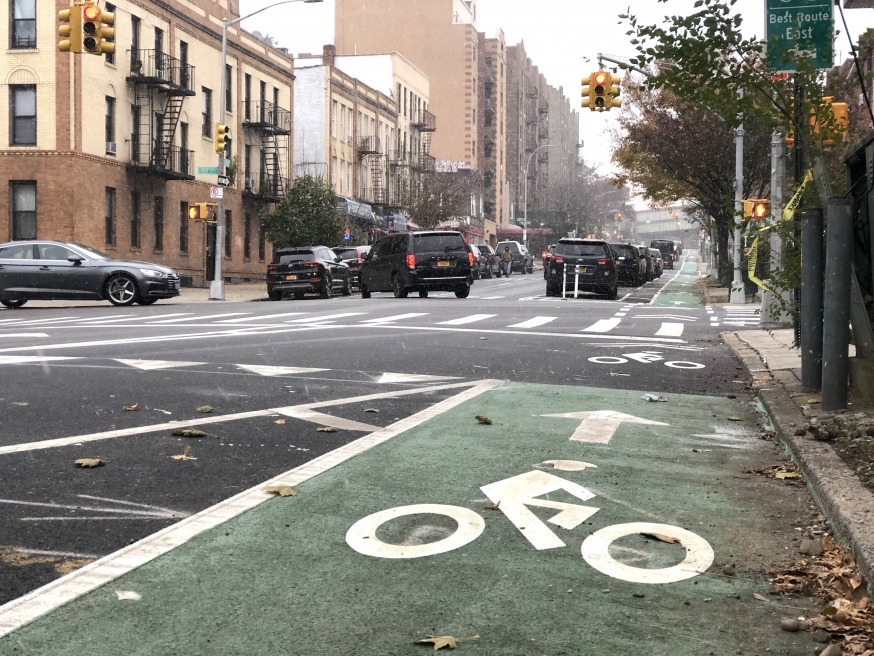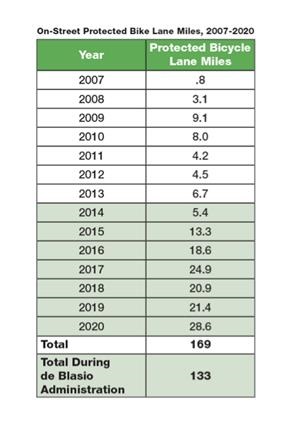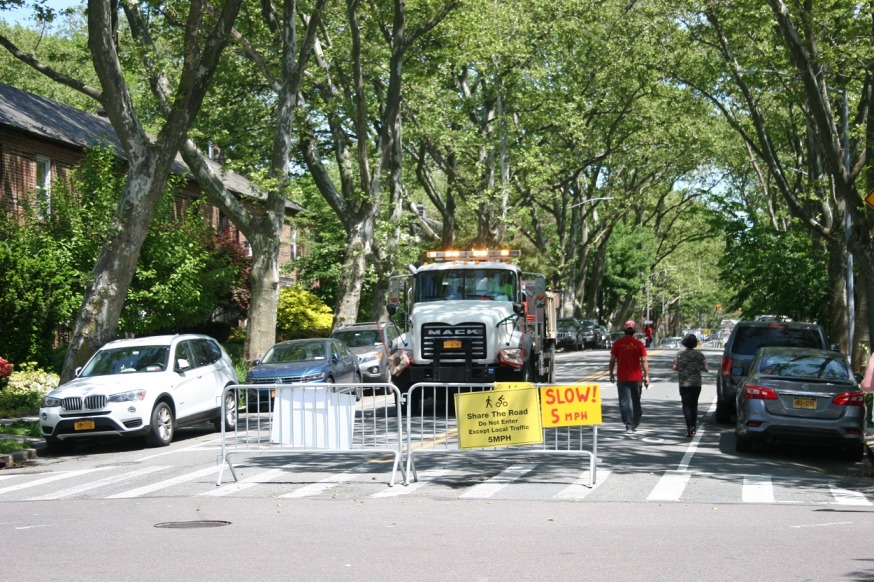
The protected bicycle lane on 43rd Avenue in Sunnyside/Woodside that was constructed in 2018. The city adjusted the timing of the traffic lights along this strip in 2020 to reflect the speed of bicycles as opposed to cars (Photo: Nathaly Pesantez)
Dec. 29, 2020 By Christian Murray
The Department of Transportation constructed 28.6 miles of protected bicycle lanes across the city in 2020, Mayor Bill de Blasio announced today.
The mayor said 2020 was a record year in terms of mileage, outdoing 2017 when 24.9 miles of protected bicycle lanes were built.
The borough of Queens saw 9.5 miles of on-street protected bicycle lanes go up in 2020, more than any other borough. In Brooklyn 9.1 miles of protected bike lanes were constructed; Manhattan 5.0 miles; the Bronx 3.2 miles; and Staten Island 1.8 miles.
The mayor said that 2020 was a year when the city’s roadways underwent significant change. He said that there were 35.2 miles of conventional bike lanes built across the five boroughs; 83 miles of car-free open streets; and that there was space designated for more than 10,800 Open Restaurants on city streets and sidewalks.
Additionally, he said, more than 16 miles of new bus lanes were constructed.
 “Our city has reimagined our streets as we’ve fought back the COVID-19 crisis,” de Blasio said. “That means more space for restaurants and businesses, faster options for bus riders, and more ways than ever to accommodate the cycling boom with new protected bike lanes.”
“Our city has reimagined our streets as we’ve fought back the COVID-19 crisis,” de Blasio said. “That means more space for restaurants and businesses, faster options for bus riders, and more ways than ever to accommodate the cycling boom with new protected bike lanes.”
The city has constructed nearly 170 miles of on-street protected bicycle lanes since 2007, with 133 miles during the de Blasio administration.
The protected bike lanes that were constructed in Queens in 2020 went up in four areas: on Crescent Street from Queens Plaza North to Hoyt Avenue North; Laurel Hill Boulevard from 51st Avenue to 55th Road; Cross Bay Boulevard from Van Brunt Road to West 20th Road; and Cross Bay Boulevard from the Addabbo Bridge to East 6th Road.
“In a year where we have seen cycling boom throughout this city, DOT has done a remarkable job in building the critical infrastructure to keep New Yorkers safe and moving throughout this city,” said Deputy Mayor Laura Anglin in a statement.
The city also installed more than 1,200 speed camera across the five boroughs in 2020; added 50 neighborhood loading zones, bringing the total to 112 zones; and launched the Eastern Queens Greenway
The DOT also adjusted the timing of traffic lights to reflect the speed of bicycles as opposed to cars– in what is called “green wave signal timing”- across 13 corridors in 2020, including 43rd Avenue in Sunnyside.
“In a trying year, we should be proud of making real progress towards our goal of making our city’s streetscape more livable, safe, and enjoyable for all New Yorkers,” said Council Speaker Corey Johnson.
“We have much work left to do, but the Council is proud of our efforts to get the most out of our streets this year and will continue to push for more as we recover from the pandemic next year and beyond,” Johnson added.

Open Streets on 39th Avenue in Sunnyside/Woodside (Photo: Asha MacKay)
